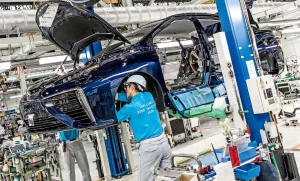
The Impact of Autonomous Vehicles on the Automotive Industry
Autonomous vehicles (AVs) hold the potential to revolutionize how we travel. They could significantly reduce traffic congestion, enhance safety and provide mobility for those who would otherwise rely on public transportation.
However, they also present a number of obstacles that must be overcome before mass adoption can take place. This will have an impact on both the automotive industry and overall economic health.
Safety
One of the greatest advantages of autonomous vehicles is their potential to reduce traffic-related fatalities and injuries. These vehicles come equipped with advanced safety features like forward collision warning systems and automatic emergency braking.
Autonomous vehicles (AVs) also possess the capacity to detect and avoid objects that human drivers may overlook. These systems rely on sensors placed around the car, such as radar, video cameras, laser-based ranging (lidar), and ultrasonic sensors in the wheels.
However, these features are still in their early stages and must be paired with regulations that reflect public health priorities. These regulations must then be created through an informed political process that guarantees public safety and equity.
Reliability
Autonomous vehicles rely on a combination of hardware and software to perceive, move and communicate with their environment. These powerful processors make instantaneous decisions based on data collected from multiple sensors.
Autonomous vehicles have had a profound effect on the automotive industry, yet they also pose challenges. One major issue that arises is reliability.
Reliability is the likelihood that a product, system or service will perform its intended function adequately over a specified period and under specified conditions. It’s an effort to prevent failures and minimize maintenance expenses.
Reliability is assessed using various methods. Some of the most widely used include test-retest reliability, internal consistency reliability and parallel test reliability.
Costs
As the automotive industry rushes to create and deploy autonomous vehicles, a range of costs could arise. Some are anticipated to be beneficial, while others could prove detrimental.
Automakers anticipate that electric and autonomous vehicles (EVs and AVs) will require lower labor and manufacturing costs than their internal combustion counterparts, due to their greater modularity and reduced complexity. On the factory floor, however, workers’ skills may need to evolve as more EVs and AVs become commonplace.
Local universities are working in collaboration with industry to prepare their workforce for the changes, emphasizing a “versatility and adaptability” mindset. These strategies could help keep automotive production clusters intact as the electric and autonomous vehicle transition takes hold. Furthermore, local investments into domestic capacity for producing electric vehicles and autonomous vehicles is becoming an important long-term economic driver.
Regulations
Autonomous vehicles (AVs) rely on sophisticated software that processes information and adapts according to environmental and driving conditions. Sensors, cameras, radar, lidar, GPS and other technology help the software track objects, avoid obstacles and adhere to traffic rules.
As AV technology develops, manufacturers will need a legislative framework that limits product liability for injuries and property damage caused by its operation. Therefore, these vehicles and their equipment must conform to national standards and definitions.
Regulations and technological progress must work hand-in-hand; as technology develops, regulations should be updated to keep up. Manufacturers also need to be aware of state laws that could impact their ability to market or manufacture autonomous vehicles; this necessitates careful communication with lawmakers.
Markets
Auto manufacturers are actively engaged in developing self-driving technology. While the public has begun to warm to autonomous vehicles (AVs), policymakers and those involved with mobility need to understand how this new innovation may impact their businesses.
Navigating in an autonomous vehicle (AV), uses a variety of sensors to sense traffic lights and road signs, radar, ultrasonic sensors that measure distances to other cars and pedestrians, and lidar (light detection and ranging) which bounces pulses of light off surfaces to measure distances and detect road edges.
These technologies promise to enhance safety by reducing human error-related accidents, increase vehicle accessibility, and promote sustainability by increasing the likelihood that more electric vehicles will be on the road. Nonetheless, a number of challenges still need to be overcome:


